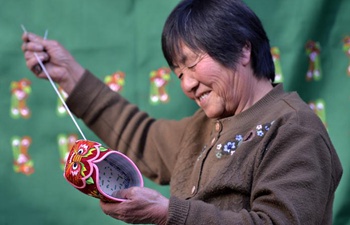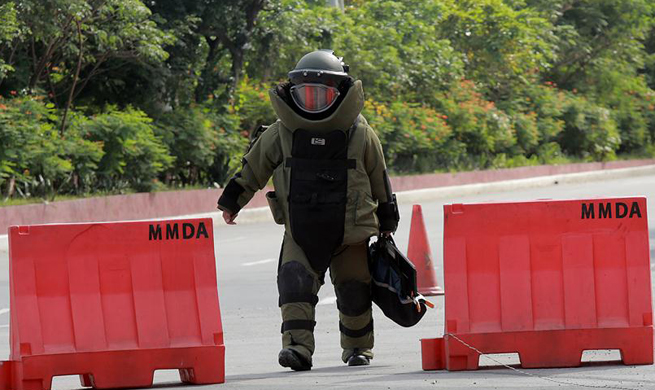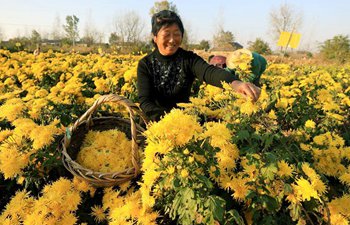by Xinhua writer He Fei
BEIJING, Nov. 8 (Xinhua) -- As the 2017 Asia-Pacific Economic Cooperation (APEC) Economic Leaders' Meeting is to kick off this weekend in Da Nang, Vietnam, international observers have highlighted that the region is the locomotive driving global growth and sustainable development.
IMPORTANCE OF GROWING ECONOMIC LINKAGES
"Asia is the central element of the world economy and a big focus of the attention from the industrial world," said Peter Drysdale, emeritus professor of economics and head of the East Asian Bureau of Economic Research and East Asia Forum at the Crawford School of Public Policy at the Australian National University.
As the West leans toward protectionism and anti-globalization, how the Asia-Pacific region deals with the new circumstances is key to the future of globalization, the researcher noted.
The Asia-Pacific region is, undoubtedly, the world's busiest area in terms of trade and economy. According to the Asian Economic Integration Report 2017 released by the Asian Development Bank in October, the region's trade growth rose to 1.7 percent in 2016 from 1.4 percent in 2015 against a deceleration on the world level.
However, an unstable global economic and trade policy environment poses risks to free trade and economic integration. The report said that growing economic linkages in the region help improve its resilience against these uncertainties.
Alan Bollard, executive director of the APEC Secretariat based in Singapore, pointed out the APEC summit is a chance for world leaders to gather and discuss economic agendas.
In less than three decades, APEC that consists of 21 Pacific Rim economies has played an important role in advancing trade liberalization and facilitation, promoting economic integration and boosting connectivity.
By bringing together the world's top two economies, the United States and China, and some other much smaller ones, APEC can take advantage of what different economies can do best, Bollard said.
TRADE PARTNERSHIPS, CHINA'S ROLE
Drysdale stressed that the economies in the region should underpin trade liberalization in the context of the Regional Comprehensive Economic Partnership (RCEP).
Launched in 2012, the RCEP talks involve 10 member states of the Association of Southeast Asian Nations (ASEAN) and their six trading partners -- Australia, China, India, Japan, New Zealand and South Korea.
Drysdale said he hoped that world leaders at the ASEAN summit in the Philippines would declare core elements of substantial agreement on the RCEP.
"It's important to press ahead with the progress in RCEP, because it's so important to buttress support for the global system as well as deliver on the potential liberalization and reform has for the Asian economies," said Drysdale.
For his part, Bollard said he expected progress on the potential realization of the Free Trade Area of the Asia-Pacific (FTAAP) during the APEC meetings.
The FTAAP, spearheaded by China at the 2014 APEC Summit in Beijing, has been gaining steam especially after a collective study was approved two years later in Lima, Peru.
By encompassing all the APEC economies, the FTAAP will become the world's largest free trade zone, covering 57 percent of the global economy and nearly half of global trade.
Drysdale noted that against the backdrop of global uncertainties, China's stance on promoting open trade is "incredibly important."
As the second largest economy contributing roughly 30 percent of global growth, China has sailed in the uncharted waters to address tough reform tasks, shifting into a consumption-driven economy and implementing a supply-side reform to achieve green and sustainable development.
Bollard said APEC "watched China's Belt and Road Initiative with interest," describing it as "about investment, projects and development of infrastructures."
"So far as it involves infrastructure projects and connectivity, we are very interested in that," said Bollard.
The Belt and Road Initiative, proposed by China in 2013, comprises an overland Silk Road Economic Belt and a 21st Century Maritime Silk Road and aims to revive and expand cooperation and exchanges along and beyond the ancient Silk Road routes, which nurtured trade between Asia and the outside world in the past.
Drysdale noted "at the Belt and Road Forum in Beijing in May, President Xi (Jinping) and others have made clear that China was opening an invitation for others to find a pathway forward for the agenda for investing in connectivity. The infrastructure agenda, and the BRI (the Belt and Road Initiative), the AIIB (the Asian Infrastructure Investment Bank) are all a part of it."
Countries involved should press ahead with the agendas which are "a mutually beneficial game," he said.
(Wang Lili in Singapore, Xu Haijing and Zhao Bo in Canberra contributed to the report.)

















